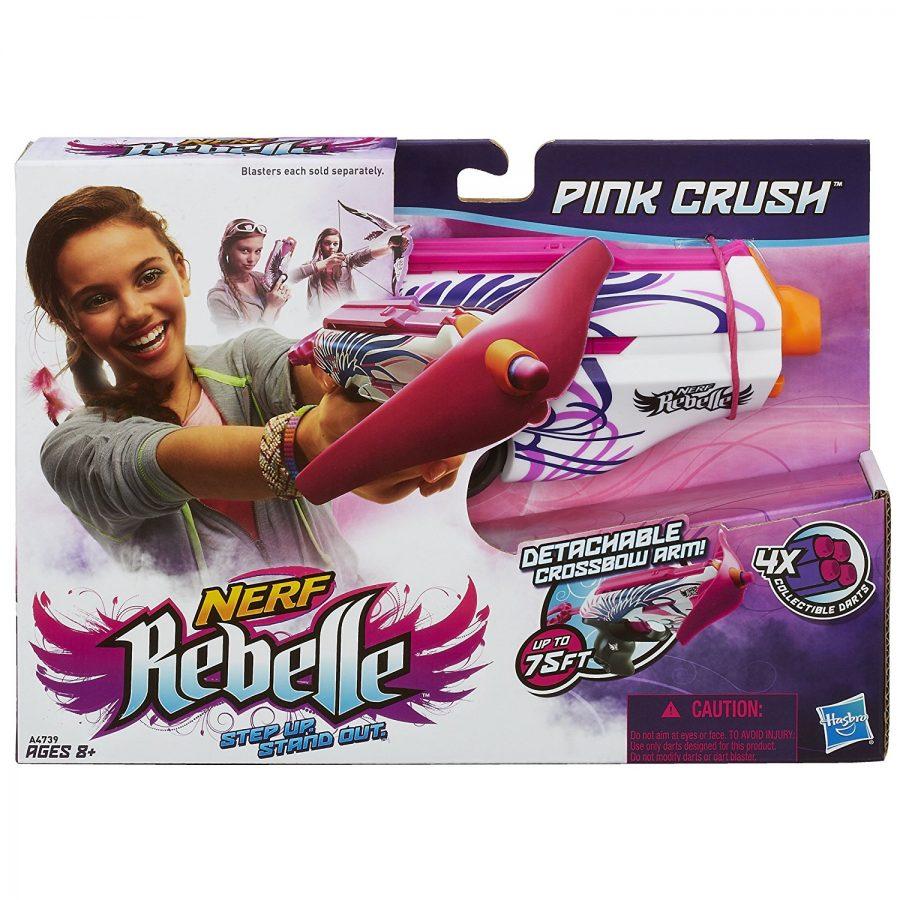Toy Advertising and the Separation of Genders
Step up. Stand out. Blasters each sold separately.
Children throughout all of history have been taught that if you look like this, you should act like this. Toys have supported these stereotypes.
Junior Heather Griffith, a member of the Gender Equality Club, explained that all this matters. “It sets stereotypes for girls by limiting our choices in media and toys. Like, the choices are limited to barbies, dolls, toys that are not ‘boyish’. Women are treated as mothers, not a bad thing, but not the only thing we can be.” Griffith also disagrees with the standards it sets for the opposite spectrum. “All boys are supposed to grow to be the heroes. Not all boys are gonna grow up to be the breadwinner of the family…guys can be great fathers, too.”
In the same way girls are given restricted expectations, a boy’s expectation is restrictive. Humans love categorizing, labeling, and organizing. We like to have a term, and traits to go along with that term. From a young age, we are given our standard. Whether it’s a color, a hairstyle, or pieces of plastic, we have an expectation, a norm. Does it have to be that way? Griffith eloquently stated, “You don’t see little girls playing with robots, you don’t see boys playing with dolls.” Why not?
When it comes to what you should entertain yourself with, illustrations of Red Rider BB Guns and radio stories of Raggedy Anne were king in the 30’s. Toy marketing had a big emphasis on being the hero of the story. Boys are that cowboy, girls are that caring mother. Toys were like props to a stage play, tools for your imagination. Board games had a big emphasis on families though, and were completely gender neutral. All of this would stay a constant until a certain huge advancement in how Americans view media would come to pass.
The late 40’s to mid 60’s were the postwar years of Elvis, Rock N’ Roll, and Vietnam.Toys in this era had less emphasis on you being the hero of your own story, and more on you being the hero of someone else’s. As someone of the male persuasion, you would dress up as your favorite TV hero and shoot up anyone you fancied (or didn’t). On the opposite side of the spectrum, you would play the protective mother of your child. One of the main constants in any “girl” toy is the maternal aspect. A common trend with anything pink is that all little girls absolutely love to take care of something else. It all culminated in the release of Barbie in 1959, and that was the start of a snowball of cash that would lead to the wackiest and most flashy time in US culture: the 1980’s.
Some of you might have grown up here, the time of materialism, the time of big hair and even bigger pants. This was when corporations had a genius idea: to design only one toy, but market it two different ways! For example, in the year 1989, Bluebird Toys released the sensation known as Polly Pocket™, a bunch of little people in a little world with big aspirations (of going to pet shops). Then, just three years later, in 1992, from Bluebird Toys comes Mighty Max™. Mighty Max™ is a bunch of little people in a little world with big aspirations (of fighting monsters). Same toy, different marketing. The 80’s also introduced the design philosophy that is seen to this day when it comes to gender-specific toy advertising: essentially, “boy’s” toys are all about collecting characters — Transformers, GI-Joe, He-Man, etc. You get one toy, now it’s time to get the rest! “Girl’s” toys have the main goal of accessorizing — get Barbie, get her outfits, her house, her car, all that jazz.
Is it time for a change?
Your donation will support the student journalists of Central Kitsap High School and help us cover our annual website hosting costs.






